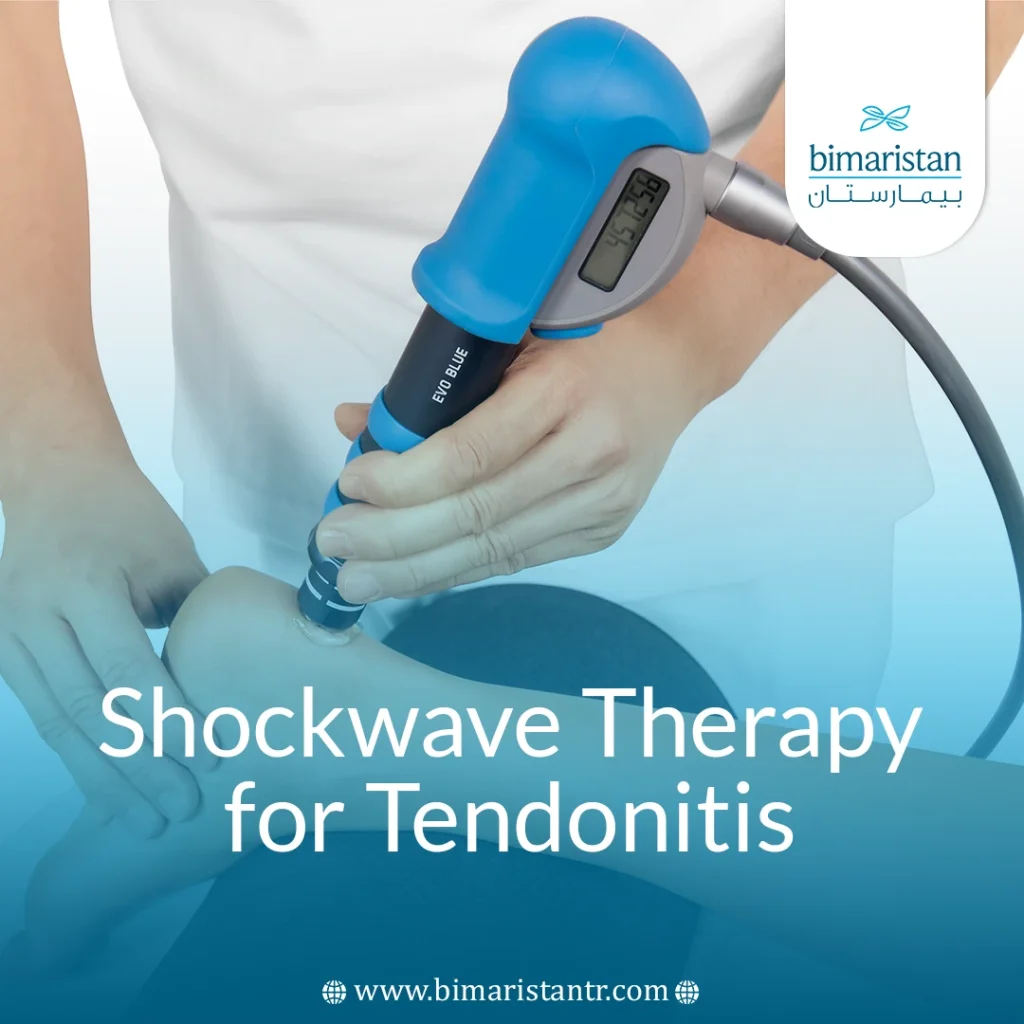Tendonitis is a common muscular issue that can impede mobility and affect the quality of daily life, especially when relying on painkillers without resorting to medical treatment. With the development of physical medicine, shockwave therapy for tendonitis has emerged as an effective and non-invasive option that aims to accelerate healing and relieve pain in a safe and precise manner.
What is tendonitis?
Tendonitis: A common medical condition in which one of the body’s tendons becomes inflamed, swollen, and painful. Tendons are the thick, fibrous fibers that connect muscles to bones, most commonly in the shoulder and knees, and can be either acute (short-term) or chronic (long-term).
It has several causes, including:
- Overuse or repetitive movements over time (such as running or throwing).
- Stress from sudden movements.
- Injury or post-injury due to repetitive stress.
- diabetes mellitus.
- Rheumatoid arthritis.
- Having gout or gouty disease.
- Osteoarthritis.
- Infection.
- Sometimes, it is caused by taking certain medications as a side effect, such as statins (cholesterol-lowering drugs) or certain anti-inflammatories, including fluoroquinolone anti-inflammatories.
Tendonitis is associated with symptoms that often occur where the tendon connects to the bone, including
- Pain that is usually described as mild, especially when moving the affected joint or limb.
- Pain on touch.
- Simple tumor.
- Pain at the site of the tendon and surrounding areas. This pain may increase with movement.
- Joint stiffness or difficulty moving joints.
- Hearing or feeling a crackling or popping sensation when you move.
- Swelling, often with a change in skin color (from red to purple or darker than normal skin color).
What are shockwaves?
Shockwaves: Short, guided, high-energy pressure waves traveling faster than the speed of sound are used to reduce pain and promote the natural healing and repair of the body in cases of tendonitis. This procedure is primarily applied in cases of chronic inflammation, especially in medium and large tendons.
The procedure is performed without any surgical incision. The physiotherapist identifies the patient’s area of pain, applies the gel to the surface of the skin, then uses the device and guides it over the tendon, sending a high-energy focused sound wave that causes micro-injuries and mechanical distortions that trigger a biochemical response called mechanical transformation, enhancing blood circulation and increasing collagen production, which in turn promotes the healing process.
How is shockwave therapy for tendonitis treated?
The number of sessions for shockwave therapy for tendonitis ranges from one session every week for three to five weeks depending on the case, with each session lasting 25 to 30 minutes, and when these guidelines are followed, improvements are usually seen in 89% of cases.

What are the benefits of shockwave therapy for tendonitis?
Shockwave tendon therapy has many benefits:
- Increased blood supply: Blood supply is improved due to the formation of new blood vessels within the tendons and bones. This occurs as a result of the release of a substance known as nitric oxide (NO).
- Relief of pain: This is done by reducing the local concentration of Substance P (a neurotransmitter in the body called Substance P that is responsible for transmitting pain signals to the nervous system), which leads to pain relief after treatment.
- Pro-inflammatory action: By positively regulating inflammation, the healing process is reactivated in chronic conditions.
- Tendon regeneration: Increased production and formation of new collagen and proliferation of tendon cells (the cells responsible for repairing and maintaining healthy tendons).
- Bone regeneration: This is caused by the formation of new blood vessels and increased activity of osteoblasts (the cells responsible for forming new bone).
Why are shockwaves used?
Shockwave tendonitis treatment has many indications, and some of the most common conditions for which it is used:
- Achilles tendinopathy is one of the most common conditions.
- Jumper’s knee/Patellar tendinopathy.
- Rotator cuff tendinopathy in the shoulder.
- Calcific supraspinatus tendonitis.
- Tennis elbow (Lateral epicondylitis).
- Golf elbow (medial epicondylitis).
- De Quervain’s tenosynovitis.
What are the advantages of shockwave therapy for tendonitis compared to other treatments?
The following table shows the most important differences between shockwaves and other treatments.
| Feature | Shockwaves | Other remedies |
|---|---|---|
| Surgical intervention | No | In most cases, yes |
| Recovery time | short | Longer |
| Efficacy in chronic conditions | Effective | Sometimes limited |
| The need for painkillers | Rare | Rumor |
| Total cost | Medium | Often high |
What are the complications and side effects of shockwave tendon therapy?
Shockwave therapy is considered safe as it is non-invasive, but it can cause some minor and occasional side effects such as:
- Tingling in the treated area
- Redness of the skin
- swelling
- Increased pain
- bruises
- Red spots on the skin, usually due to not using the gel
In conclusion, shockwave therapy for tendonitis has proven to be effective in treating tendonitis, especially in chronic cases that have not responded to other treatments. As a non-invasive and low-risk procedure, it has become the procedure of choice for many doctors and patients alike. With a proper treatment plan, a patient can achieve significant improvement in pain and mobility within a short period of time. However, a consultation with a medical professional is necessary to determine the suitability of this treatment for each individual case.
Sources:
- Dedes, V., Stergioulas, A., Kipreos, G., Dede, A. M., Mitseas, A., & Panoutsopoulos, G. I. (2018). Effectiveness and safety of shockwave therapy in tendinopathies. Mater Sociomed, 30(2), 131-146.
- Centers for Medicare & Medicaid Services. (2024). Extracorporeal Shock Wave Therapy (ESWT) (LCD L38775). Retrieved July 10, 2025, from CMS website.
